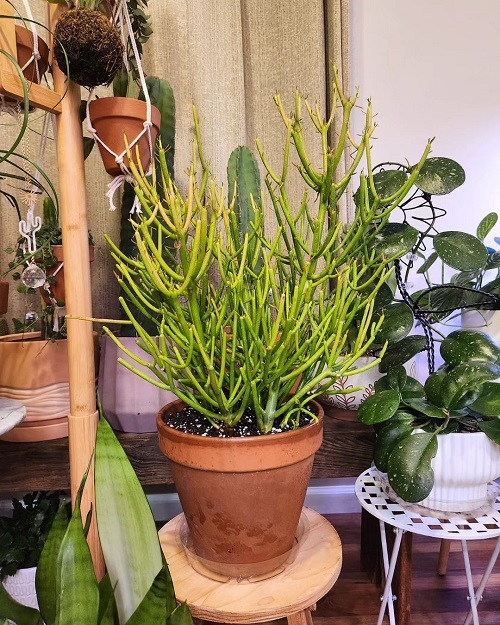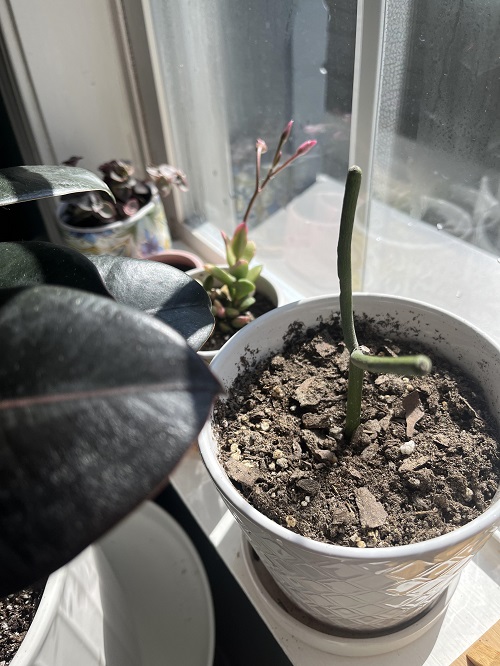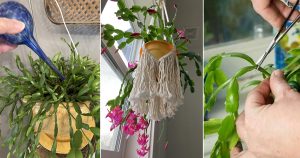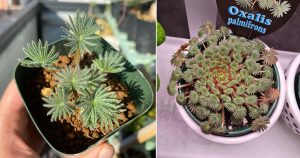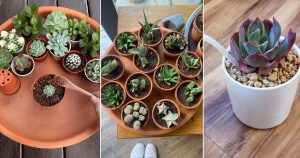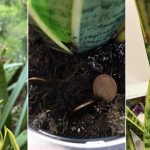Looking to master Pencil Cactus Plant Care? You’ve come to the right place! Learn everything about this low-maintenance plant here.
Pencil Cactus Plant Care is easier than you might think! It is native to semi-tropical climates, Euphorbia tirucalli is perfect for beginners as it requires minimal care and attention. Go through the article to learn the necessary details to propagate, grow, and care for this gem—an unstoppable expansion!
Pencil Cactus Plant—Key Facts
| Common Name | Sticks on fire, Indian tree spurge, pencil tree, milk bush, finger tree and more |
| Scientific Name | Euphorbia tirucalli |
| Plant Type | Shrub |
| USDA Zones | 9-12 |
| Sunlight | Full, direct sun |
| Watering | 2-3 weeks every spring and summer |
| Soil Type | Dry, sandy, well-draining soil |
| Propagation Time | Spring or early summer |
| Humidity Level | Low humidity |
| Fertilizer | Needs balanced liquid fertilizer in spring |
| Danger of Pests | Aphids, spider mites and nematodes |
Note: Toxic for both humans and pets. Be cautious!
Pencil Cactus Plant Information
The pencil cactus is known for its pencil or green bean-like foliage. In winter, its leaves turn totally red and then it looks even more beautiful. Leaves grow in bunches on the tips of the branches. The plant also produces yellow flowers covered with showy bracts. In its native regions, it can grow up to 30 feet tall and 6-10 feet wide, but it grows relatively small as a houseplant, approx. 2-6 feet tall and 1-3 feet wide.
You can plant it in your home when the growing season begins. It grows fast compared to other cacti but is a slow grower. However, you need to exercise caution when you have a pencil cactus with you. It has milky white sap almost everywhere, which can damage the cornea if it comes in contact with your eyes. Ingestion can cause irritation to lips and oral mucosa.
Furthermore, the plant’s latex holds some medical benefits, too, in treating rheumatism, asthma, and hemorrhoids. It contains active compounds like euphol and β-sitosterol. However, further research is still required to discover its full therapeutic potential.
Pencil Cactus Plant Pot Size
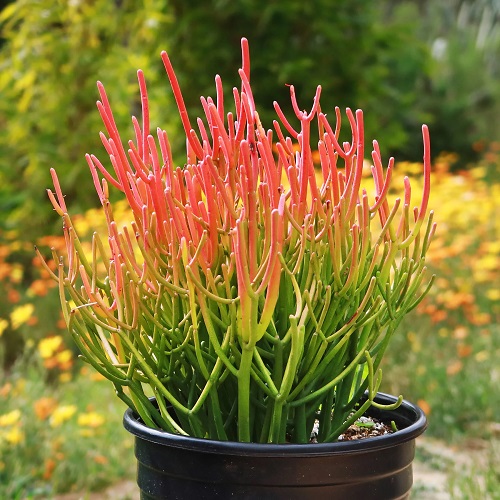
The pencil cactus is a slender, finger-like cactus that grows small in pots and containers. It is a slow-growing plant. The pot is made of terracotta with ample drainage holes, and the well-draining soil is okay.
It can even be propagated in a 4-inch pot when the cutting is smaller. Then, when you see roots growing out of the pot, you can shift it to a one-size-bigger pot.
Propagating Pencil Cactus Plant
You can propagate this plant with seeds or cuttings. However, stem cutting is easier during the growing season, which is late spring or early summer. While handling, wear protective clothing and gloves. Do you know why? After that, start with the following:
- Snip off the healthy, green stem cutting from the mother plant; it should be around 6 inches long—dip in fresh water to restrict the sap flow.
- Leave the stem cutting to develop a callus for at least 3-4 days.
- Plant it in bright, indirect light with a succulent potting mix and a little water. Allow the soil to dry out between watering.
Requirements for Growing Pencil Cactus Plant

Sunlight
This succulent plant can thrive in full sun. In the house, you can keep it on an east or south-facing window where it receives the morning sunlight.
Watering
In terms of watering this plant, don’t bother you too much. It only needs water in two-three weeks in the growing season, i.e., spring and summer, followed by reducing the irrigation in fall and winter. Avoid overwatering to preserve the roots from rotting and let the soil dry out between watering.
Soil
Well-drained, dry, sandy soil with an acidic or neutral pH would be great for your pencil cactus. You can also use succulent or cactus potting mix that gets rid of excess moisture quickly.
Temperature and Humidity
You must keep your plant in a temperature range of 55 to 75 °F, and do not let it drop below 50°F, as this will have negative effects on its health. When growing as a houseplant, safeguard it from cool drafts and keep it in low-humidity areas.
Pencil Cactus Plant Care
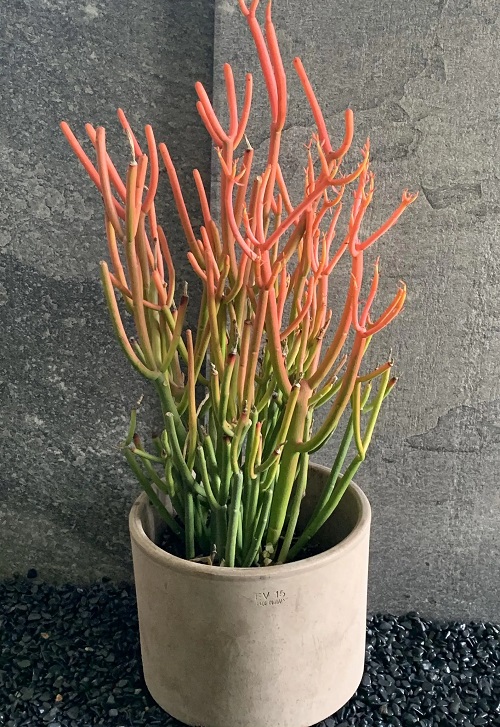
Fertilizer
Twice or thrice a year, during spring, you can feed your pencil cactus with a balanced liquid fertilizer, and it will stay super cool the entire year.
Pruning
Pruning is fairly easy; just remove the damaged or dead branches. Or, wanted to adjust its shape and height, you can do that with pruning shears. Wear protective gloves, clothing and glasses while doing the pruning, and after that, clean the scissors with alcohol to clear that sticky sap.
Pest and Diseases
The pencil cactus is not prone to pests and diseases so frequently, but yes, it can be triggered by spider mites, aphids, and nematodes due to overwatering, which can safely be handled with neem oil. So, it is crucial to keep the watering quantity and frequency in mind!

